Abstract
The total prevalence rate of tracheo-oesophageal fistula and oesophageal atresia in 15 EUROCAT registries covering 1,546,889 births during 1980-8 was 2.86 per 10,000. There was a decreasing prevalence rate over time (3.5 per 10,000 in 1980-2, 2.7 in 1983-5, 2.5 in 1986-8). Ten per cent of cases were associated with chromosomal anomalies and of the remaining cases, half were multiply malformed. Sixty two per cent of cases were males. There was a significantly increased risk for mothers of less than 20 years of age (odds ratio compared with mothers of 25-29 = 1.82, 95% confidence interval 1.23 to 2.67). There were no apparent epidemiological differences between isolated and multiply malformed cases in secular trend, sex ratio, or maternal age. Both isolated and multiply malformed cases tended to be premature and small for gestational age. There was variation between centres in survival of affected liveborn children up to 1 year of age.
Full text
PDF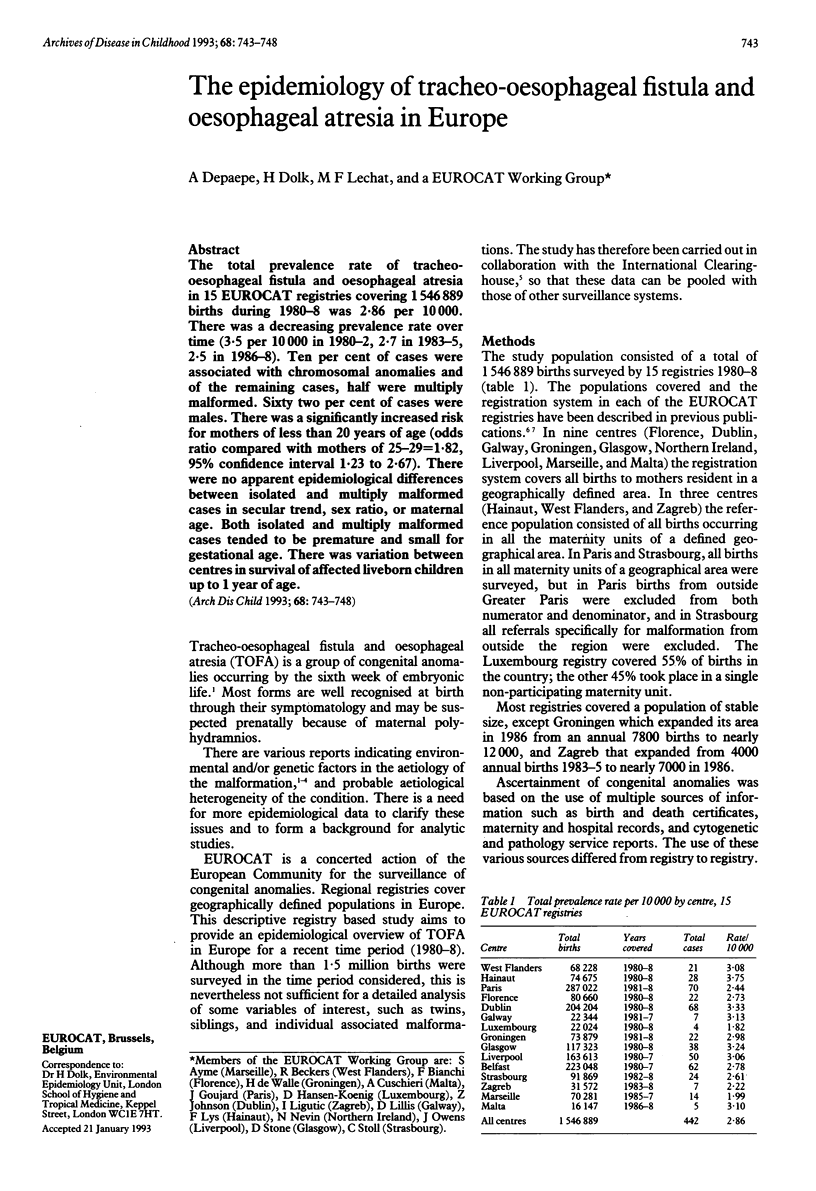
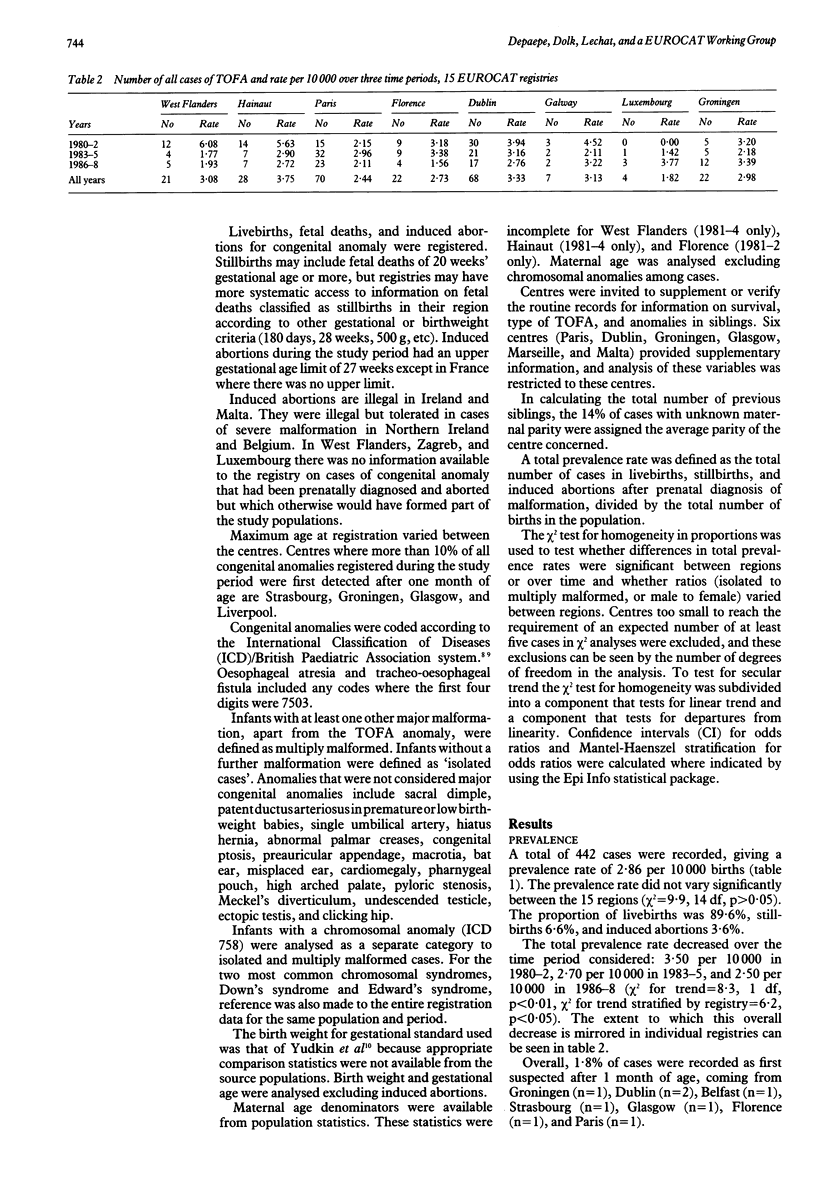
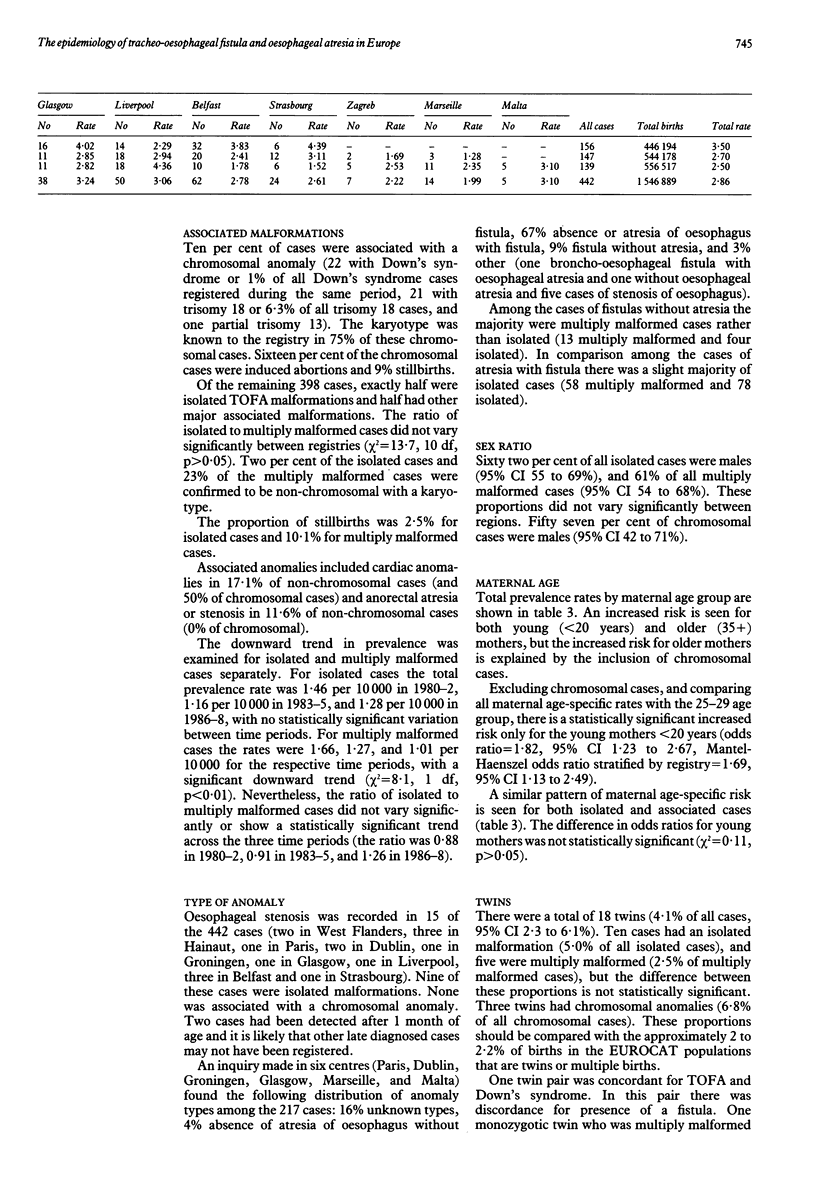
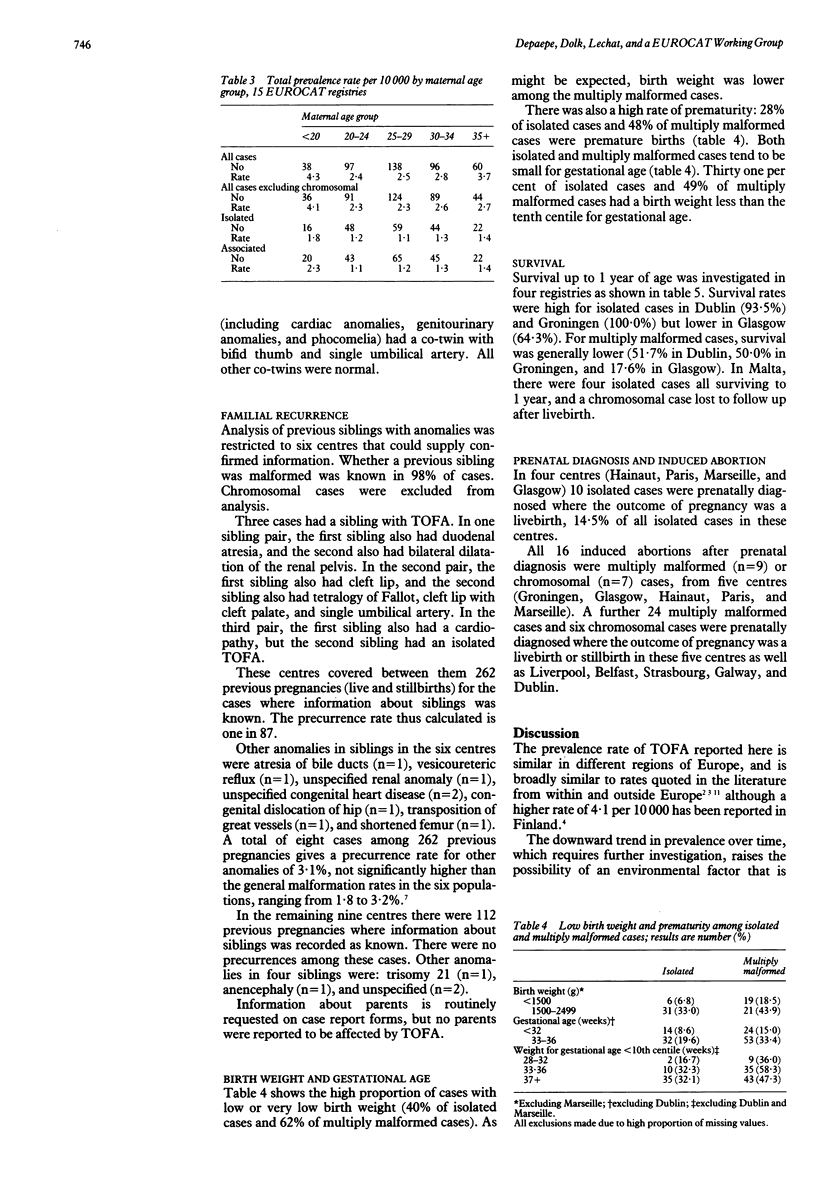
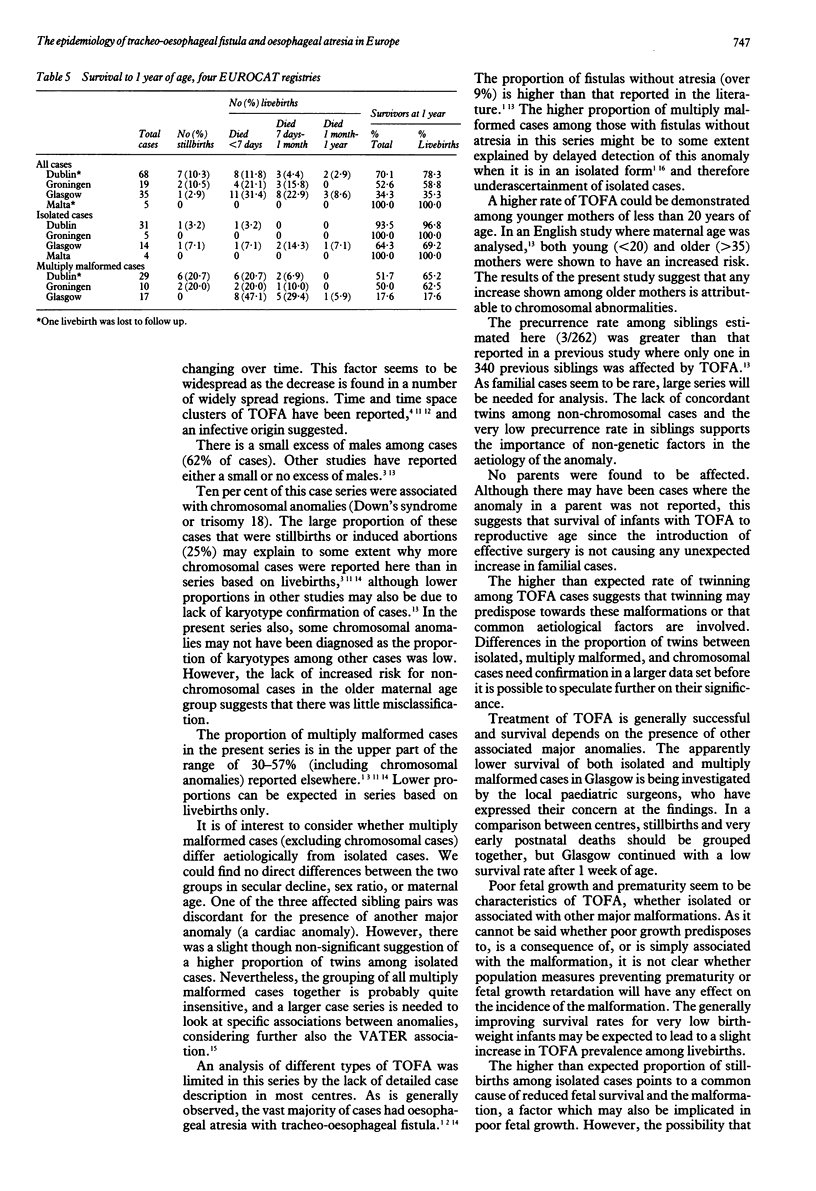
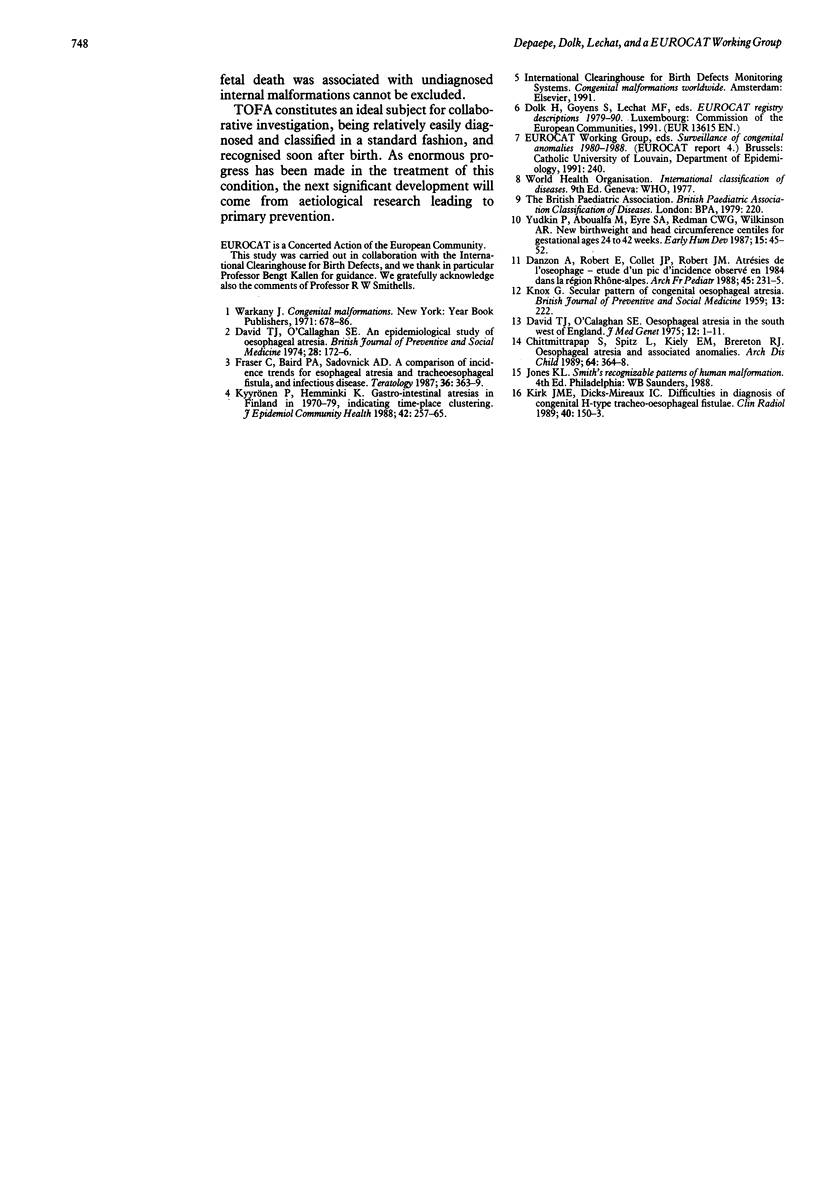
Selected References
These references are in PubMed. This may not be the complete list of references from this article.
- Chittmittrapap S., Spitz L., Kiely E. M., Brereton R. J. Oesophageal atresia and associated anomalies. Arch Dis Child. 1989 Mar;64(3):364–368. doi: 10.1136/adc.64.3.364. [DOI] [PMC free article] [PubMed] [Google Scholar]
- Danzon A., Robert E., Collet J. P., Robert J. M. Atrésies de l'oesophage. Etude d'un pic d'incidence observé en 1984 dans la région Rhône-Alpes. Arch Fr Pediatr. 1988 Apr;45(4):231–235. [PubMed] [Google Scholar]
- David T. J., O'Callaghan S. E. An epidemiological study of oesophageal atresia. Br J Prev Soc Med. 1974 Aug;28(3):172–176. doi: 10.1136/jech.28.3.172. [DOI] [PMC free article] [PubMed] [Google Scholar]
- David T. J., O'Callaghan S. E. Oesophageal atresia in the South West of England. J Med Genet. 1975 Mar;12(1):1–11. doi: 10.1136/jmg.12.1.1. [DOI] [PMC free article] [PubMed] [Google Scholar]
- Fraser C., Baird P. A., Sadovnick A. D. A comparison of incidence trends for esophageal atresia and tracheoesophageal fistula, and infectious disease. Teratology. 1987 Dec;36(3):363–369. doi: 10.1002/tera.1420360313. [DOI] [PubMed] [Google Scholar]
- KNOX G. Secular pattern of congenital oesophageal atresia. Br J Prev Soc Med. 1959 Oct;13:222–226. doi: 10.1136/jech.13.4.222. [DOI] [PMC free article] [PubMed] [Google Scholar]
- Kirk J. M., Dicks-Mireaux C. Difficulties in diagnosis of congenital H-type tracheo-oesophageal fistulae. Clin Radiol. 1989 Mar;40(2):150–153. doi: 10.1016/s0009-9260(89)80075-3. [DOI] [PubMed] [Google Scholar]
- Kyyrönen P., Hemminki K. Gastro-intestinal atresias in Finland in 1970-79, indicating time-place clustering. J Epidemiol Community Health. 1988 Sep;42(3):257–265. doi: 10.1136/jech.42.3.257. [DOI] [PMC free article] [PubMed] [Google Scholar]
- Yudkin P. L., Aboualfa M., Eyre J. A., Redman C. W., Wilkinson A. R. New birthweight and head circumference centiles for gestational ages 24 to 42 weeks. Early Hum Dev. 1987 Jan;15(1):45–52. doi: 10.1016/0378-3782(87)90099-5. [DOI] [PubMed] [Google Scholar]


